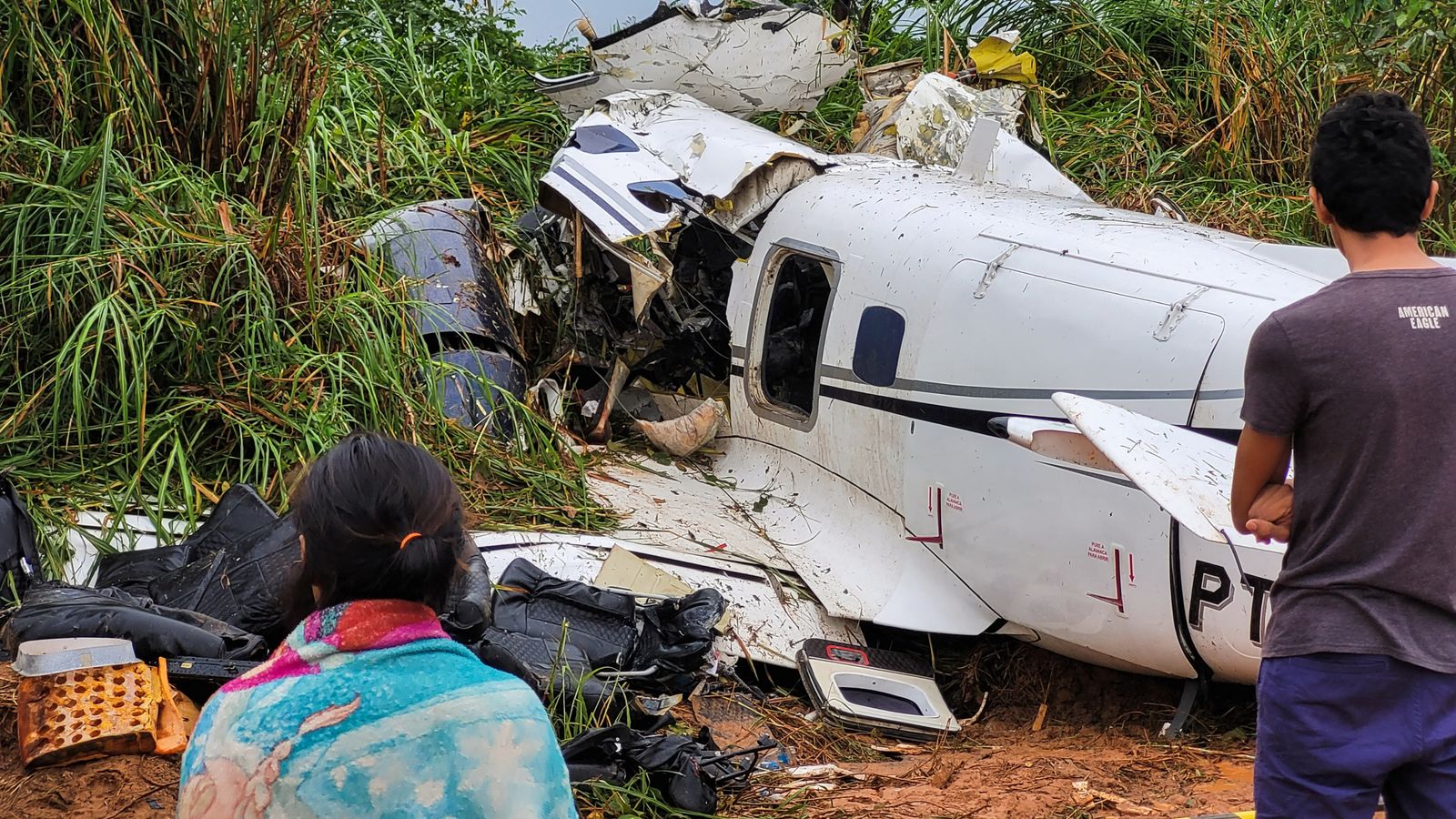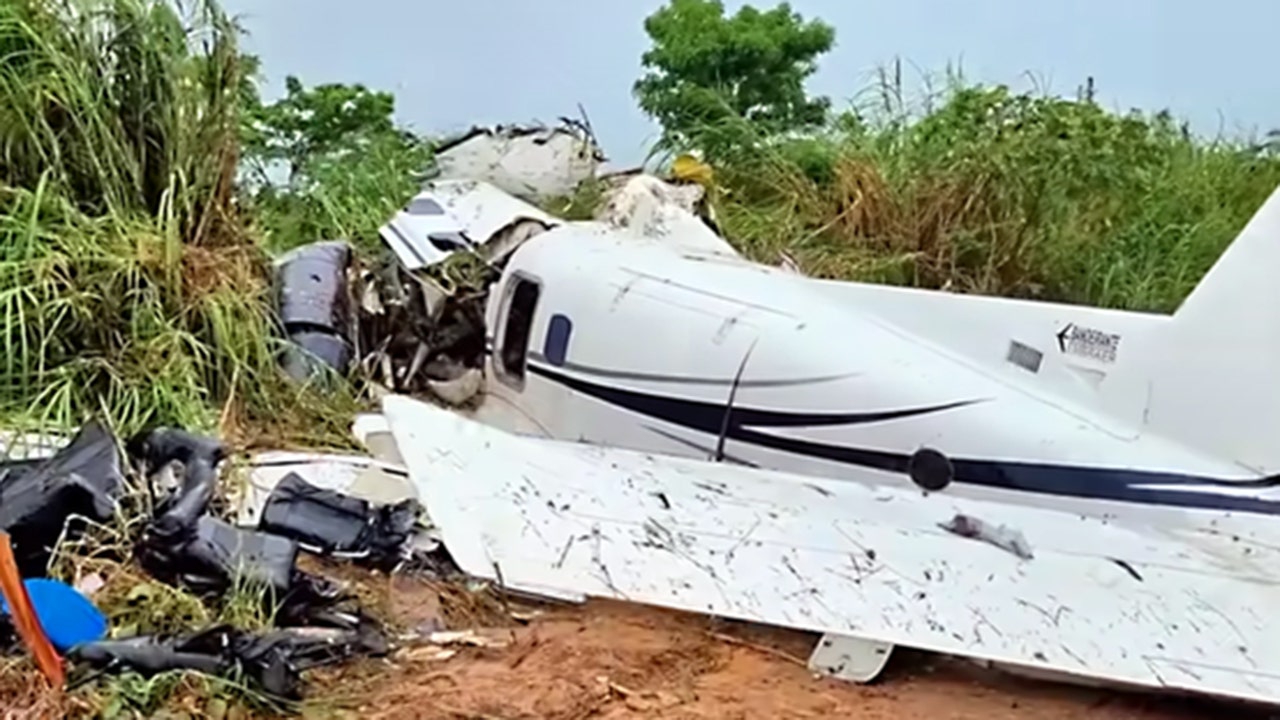History of Plane Crashes in Brazil: Plane In Brazil Crash

The history of aviation in Brazil is intertwined with a number of tragic plane crashes, each leaving an indelible mark on the nation’s collective memory. These events have shaped the Brazilian aviation industry, highlighting the importance of safety protocols and technological advancements.
Significant Plane Crashes in Brazil
The following is a timeline of some of the most significant plane crashes in Brazil, highlighting the dates, locations, and number of casualties:
- 1946: A Brazilian Air Force Douglas C-47A crashed near Rio de Janeiro, killing all 21 passengers and crew members. The crash was attributed to pilot error, as the aircraft was flying too low in poor weather conditions.
- 1952: A Panair do Brasil Lockheed Constellation crashed near the Azores, killing all 50 passengers and crew members. The crash was caused by a combination of factors, including a mechanical failure and pilot error.
- 1961: A VARIG Lockheed Constellation crashed near Rio de Janeiro, killing all 42 passengers and crew members. The crash was caused by a fire that started in the cargo hold, leading to a loss of control.
- 1973: A VARIG Boeing 707 crashed near Paris, killing all 117 passengers and crew members. The crash was caused by a mechanical failure in the hydraulic system, leading to a loss of control.
- 1982: A TAM Airlines Boeing 737 crashed near São Paulo, killing all 96 passengers and crew members. The crash was caused by a combination of factors, including pilot error and a mechanical failure in the landing gear.
- 1989: A VARIG Boeing 737 crashed near Manaus, killing all 144 passengers and crew members. The crash was caused by a mechanical failure in the engine, leading to a loss of control.
- 2006: A TAM Airlines Airbus A320 crashed near São Paulo, killing all 189 passengers and crew members. The crash was caused by pilot error, as the aircraft landed short of the runway and collided with a hangar.
- 2007: A Gol Airlines Boeing 737 crashed in the Amazon rainforest, killing all 154 passengers and crew members. The crash was caused by a mid-air collision with a private Learjet, which was flying without a transponder.
Causes of Plane Crashes in Brazil
Plane crashes in Brazil have been attributed to a variety of factors, including:
- Pilot error: This is a common cause of plane crashes, and can include factors such as fatigue, lack of training, and poor judgment.
- Mechanical failure: Mechanical failures can range from engine problems to faulty landing gear. These failures can be caused by poor maintenance or design flaws.
- Weather conditions: Severe weather conditions, such as thunderstorms, turbulence, and fog, can create hazardous conditions for aircraft.
- Terrorism: While rare, terrorism has been a factor in some plane crashes in Brazil.
Impact of Plane Crashes on the Brazilian Aviation Industry
Plane crashes have had a significant impact on the Brazilian aviation industry, leading to:
- Increased safety regulations: Following major crashes, the Brazilian government has implemented stricter safety regulations, including more rigorous pilot training requirements and stricter maintenance standards.
- Technological advancements: The Brazilian aviation industry has invested in new technologies, such as flight data recorders and ground proximity warning systems, to improve safety.
- Improved public perception: While plane crashes have shaken public confidence in the aviation industry, the industry has worked to rebuild trust by implementing safety improvements and demonstrating a commitment to safety.
Public Perception of Plane Crashes in Brazil
Plane crashes have a profound impact on public perception of air travel. In Brazil, as in many other countries, there is a heightened awareness of aviation safety, and the media often focuses on these events.
“The Brazilian aviation industry has a long history of safety improvements, but the public still remembers the tragedies of the past.” – Aviation expert
The Brazilian aviation industry continues to work to improve safety and regain public trust. This includes a commitment to ongoing research and development, as well as the implementation of best practices in aviation safety.
Notable Plane Crashes in Brazil

Brazil, a vast country with a robust aviation network, has unfortunately experienced its share of tragic plane crashes. These events have left a lasting impact on the nation, highlighting the fragility of air travel and prompting crucial safety improvements. This section delves into some of the most notable crashes, exploring the contributing factors and the lessons learned.
TAM Airlines Flight 3054 Crash, Plane in brazil crash
This devastating crash occurred on July 17, 2007, at São Paulo–Congonhas Airport. TAM Airlines Flight 3054, an Airbus A320, overran the runway during a landing attempt in heavy rain and collided with a fuel storage facility. The crash resulted in the deaths of all 187 passengers and crew members, as well as 12 people on the ground.
The investigation revealed that a combination of factors contributed to the crash, including:
- Pilot Error: The pilots were reported to have misjudged their approach and descended too low, resulting in a hard landing that caused the aircraft to lose control.
- Weather Conditions: Heavy rain and low visibility significantly impacted the pilots’ ability to see the runway and made it challenging to maintain a safe landing approach.
- Runway Surface: The runway surface at Congonhas Airport was known to be slippery, which further contributed to the aircraft’s loss of control.
- Lack of Adequate Safety Features: The airport lacked a runway overrun protection system (ROPS) that could have prevented the aircraft from exceeding the runway limits.
The TAM Airlines Flight 3054 crash led to significant changes in aviation safety regulations in Brazil, including:
- Implementation of ROPS: Airports across Brazil were mandated to install ROPS, which are designed to stop aircraft that overrun the runway.
- Enhanced Pilot Training: The crash highlighted the need for more comprehensive pilot training, particularly in challenging weather conditions.
- Airport Infrastructure Improvements: Congonhas Airport underwent significant upgrades, including runway resurfacing and the installation of advanced navigation systems.
Gol Transportes Aéreos Flight 1907 Crash
On September 29, 2006, Gol Transportes Aéreos Flight 1907, a Boeing 737-800, collided mid-air with an Embraer Legacy 600 business jet over the Amazon rainforest. The Gol aircraft crashed, killing all 154 people on board. The Legacy jet, carrying seven passengers and crew, managed to land safely.
The investigation determined that the primary cause of the crash was:
- Pilot Error: The pilot of the Legacy jet failed to follow air traffic control instructions and deviated from his assigned altitude, resulting in the collision.
- Lack of Collision Avoidance Systems: The Gol aircraft was not equipped with a collision avoidance system (CAS), which could have alerted the pilots to the impending collision.
The Gol Transportes Aéreos Flight 1907 crash led to:
- Mandatory CAS Installation: All commercial aircraft operating in Brazil were required to be equipped with CAS.
- Increased Air Traffic Control Oversight: The crash highlighted the need for more stringent air traffic control procedures and improved communication between pilots and controllers.
- Improved Safety Protocols: The incident prompted a review of safety protocols for air traffic control and aircraft operations in Brazil.
Plane in brazil crash – Kebayang gak sih, pesawat jatuh di Brazil? Serem banget! Tapi ngomongin kecelakaan, inget sama Robert F. Kennedy Jr. robert f kennedy jr yang sering ngomongin soal vaksin, eh kayaknya ada kaitannya juga sama keselamatan penerbangan. Ya, mungkin aja ada teori konspirasi di baliknya, tapi yang jelas, kita harus tetep waspada sama keselamatan penerbangan, apalagi di negara-negara yang rawan kecelakaan.
The plane crash in Brazil was a real tragedy, man. It’s got everyone talking, like, what even happened? It’s a reminder that even with all the technology, life can be unpredictable. Reminds me of how Robert F. Kennedy Jr.
has been talking about how we need to be more aware of the risks we take in our daily lives, especially with things like vaccines and environmental issues. It’s a tough topic, but it’s definitely something to think about, you know?
Anyway, hopefully they figure out what happened with that plane crash, it’s just sad.
